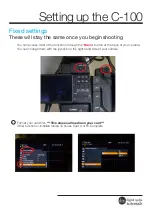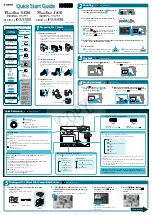
FAQs (Frequently Asked Questions)
Q:
What is polarization ?
A:
Polarization is basically directing light to shine in one direction. Light is
electromagnetic waves. Electric and magnetic fields oscillate in a direction
perpendicular to the propagation of the light beam. The direction of these fields is
called the 'polarization direction'. Normal or non-polarized light has fields in several
directions; polarized light has a field in only one direction.
Q:
What differentiates passive matrix LCDs from active matrix LCDs?
A:
An LCD is made with either a passive matrix or an active matrix display grid. An
active matrix has a transistor located at each pixel intersection, requiring less current
to control the luminance of a pixel. For this reason, the current in an active matrix
display can be switched on and off more frequently, improving the screen refresh time
(your mouse pointer will appear to move more smoothly across the screen, for
example). The passive matrix LCD has a grid of conductors with pixels located at
each intersection in the grid.
Q:
How does a TFT LCD Panel work?
A:
On each column and row of the TFT LCD panel, a data source drive and a gate
drive are attached, respectively. The TFT drain of each cell is connected to the
electrode. The molecular arrangement of liquid crystal elements differ according to
whether it is impressed with voltage or not. It varies the direction of polarized light and
the amount of light by letting it through different arrays of liquid crystal elements.
When two polarized filters are arranged vertically on a polarized light pole, the light
that passes through the upper polarized panel is turned 90 degrees along with the
spiral structure of the liquid crystal molecules and goes through the polarized filter at
the bottom. When impressed with voltage, liquid crystal molecules are arranged
vertically from the original spiral structure and the direction of the light is not turned
through 90 degrees. In this case, light that comes through the top polarized panel
may not go through the polarized panel at the bottom.
Q:
What are the advantages of TFT LCD compared with CRT?
A:
In a CRT monitor, a gun shoots electrons and general light by colliding polarized
electrons on fluorescent glass. Therefore, CRT monitors basically operate with an
analog RGB signal. A TFT LCD monitor is a device that displays an input image by
operating a liquid crystal panel. The TFT has a fundamentally different structure than
a CRT: Each cell has an active matrix structure and independent active elements. A
TFT LCD has two glass panels and the space between them is filled with liquid
crystal. When each cell is connected with electrodes and impressed with voltage, the
molecular structure of the liquid crystal is altered and controls the amount of inlet
lighting to display images. A TFT LCD has several advantages over a CRT, since it
can be very thin and no flickering occurs because it does not use the scanning
file:///D|/My%20Documents/dfu/A9/english/190p6/safety/saf_faq.htm (6 of 8)2005-06-09 8:35:13 AM
















































